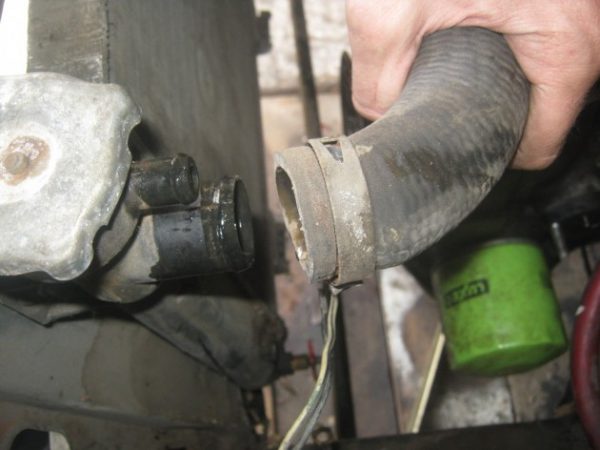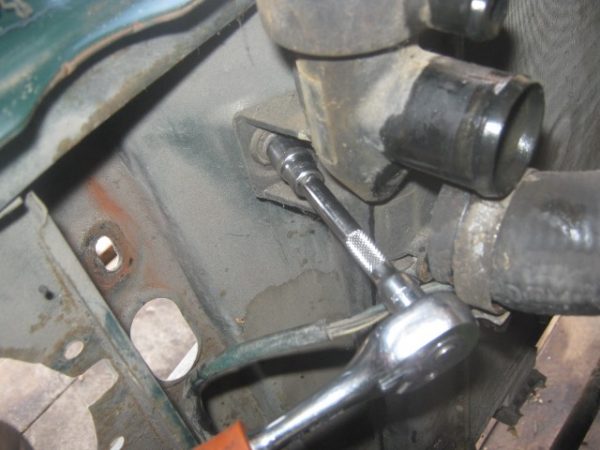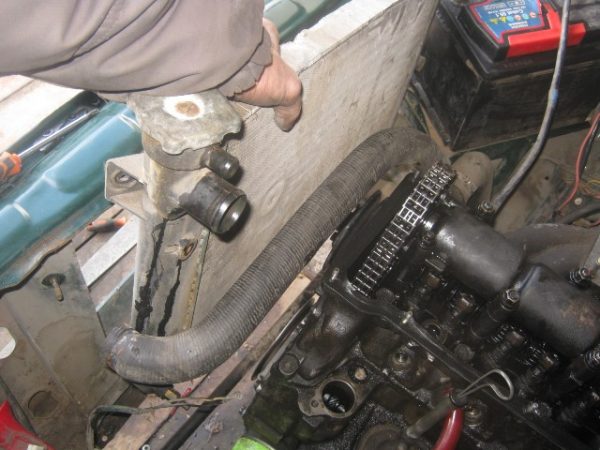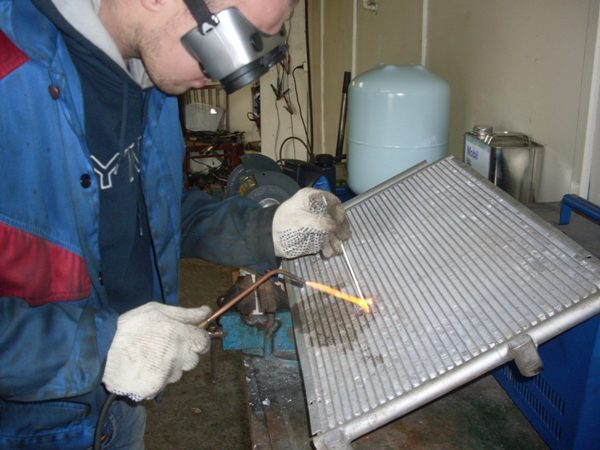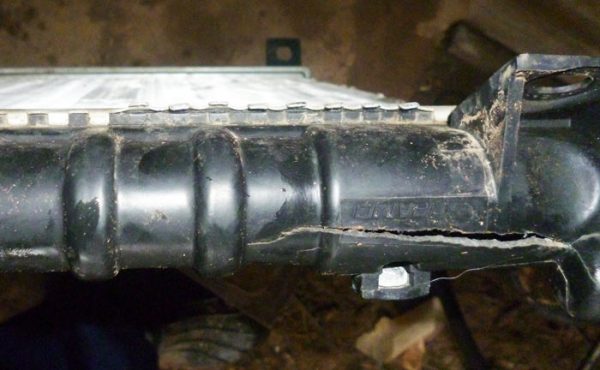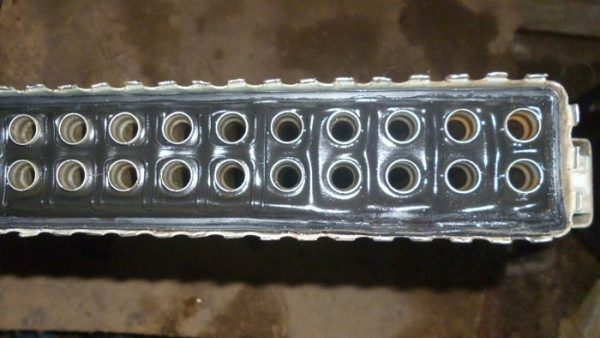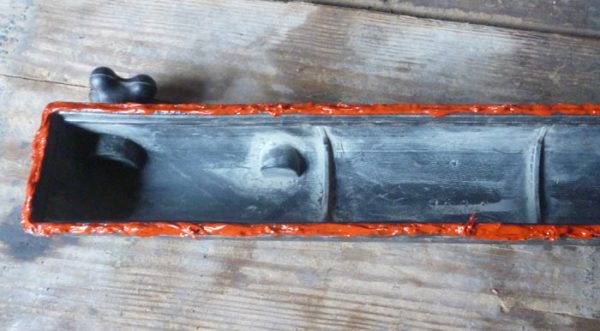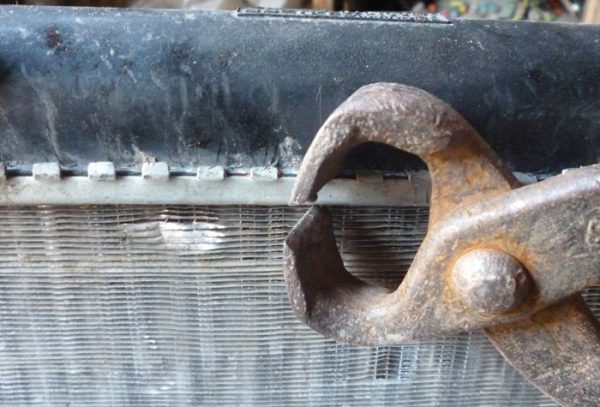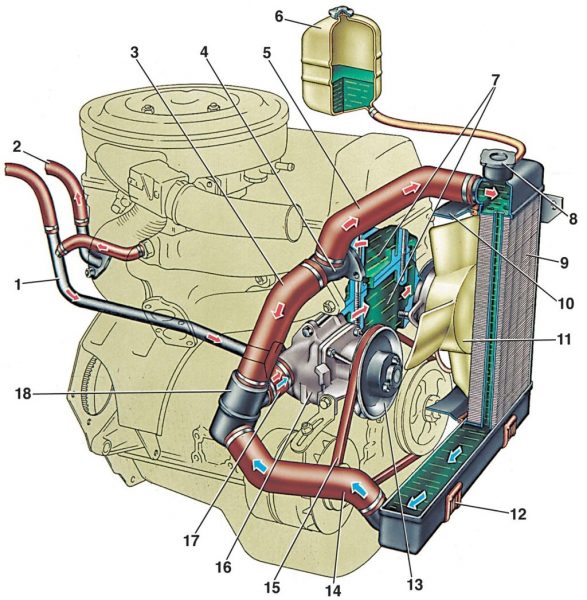
Cooling radiator VAZ-2107: features of operation and maintenance
Content
The cooling system can be called without exaggeration one of the most important for a car, because the durability and reliability of the key unit of any machine - the engine - depends on its proper operation. A special role in the cooling system is assigned to the radiator - a device in which the liquid is cooled, which protects the engine from overheating. The radiator used in the VAZ-2107 car has its own characteristics and requires periodic inspection and maintenance. Strict observance of the operating rules prescribed by the manufacturer will keep the radiator in good condition for a long time. Due to the simplicity of the design, the radiator is quite easy to dismantle and quite accessible for self-repair.
Functions and principle of operation of the VAZ-2107 cooling system
The engine cooling system of the VAZ-2107 car belongs to the category of liquid, sealed, using forced circulation of the coolant. To compensate for temperature fluctuations in the volume of antifreeze, an expansion tank is used in the system. The liquid heated in the engine is used in the interior heater, which is connected to the system with inlet and outlet hoses.
The cooling system includes the following elements.
- The pipe through which the coolant is discharged from the heater core.
- A hose that supplies fluid to the interior heater.
- Thermostat bypass hose.
- Cooling jacket pipe.
- A hose through which fluid is supplied to the radiator.
- Expansion tank.
- Cooling jacket for cylinder block and block head.
- Cover (plug) of the radiator.
- Radiator.
- Fan cover.
- Radiator fan.
- Rubber lining under the radiator.
- Pump drive pulley.
- The hose through which fluid is discharged from the radiator.
- Drive belt for generator and pump.
- Pump (water pump).
- The hose through which the coolant is supplied to the pump.
- Thermostat.
 The VAZ-2107 cooling system belongs to the class of sealed with forced injection of coolant
The VAZ-2107 cooling system belongs to the class of sealed with forced injection of coolant
The main function of the cooling system is to maintain the engine temperature within the normal range, i.e., in the range of 80-90 ° C. The principle of operation is based on the removal of excess heat into the atmosphere through an intermediate technological link - the coolant. In other words, antifreeze or other liquid, heated to a high temperature in the cooling jacket, is sent to the radiator, where it is cooled under the action of air currents and fed back into the engine. Circulation is carried out using a pump that has a belt drive from the crankshaft - the faster the crankshaft rotates, the faster the coolant circulates in the system.
More about the device of the VAZ 2107 engine: https://bumper.guru/klassicheskie-modeli-vaz/dvigatel/remont-dvigatelya-vaz-2107.html
Cooling system radiator
The VAZ-2107 cooling radiator, which is a key element of the car's cooling system, is usually made of copper or aluminum. The design of the radiator includes:
- upper and lower tanks;
- cover (or cork);
- inlet and outlet pipes;
- safety pipe;
- tube-lamellar core;
- rubber cushions;
- fastening elements.
In addition, a hole is provided in the radiator housing for the fan sensor, which is usually located on the lower tank, next to the drain hole.
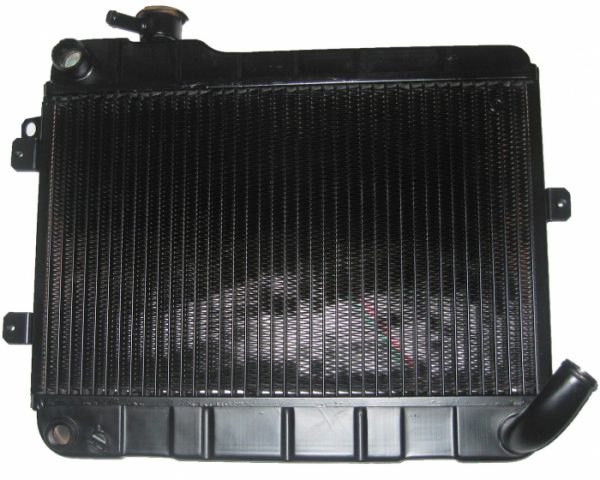
Radiator dimensions are:
- length - 0,55 m;
- width - 0,445 m;
- height - 0,115 m.
Product weight - 6,85 kg. To ensure higher thermal conductivity, the radiator tanks can be made of brass. The core is assembled from thin transverse plates through which vertical tubes soldered to them pass: this design allows the liquid to cool more intensively. For connection with the cooling jacket, pipes are placed on the upper and lower tanks, on which hoses are attached with clamps.
Learn more about cooling system diagnostics: https://bumper.guru/klassicheskie-modeli-vaz/sistema-ohdazhdeniya/sistema-ohlazhdeniya-vaz-2107.html
Initially, the manufacturer for the VAZ-2107 provided a copper single-row radiator, which many car owners replace with a double-row one (with 36 tubes) to increase the efficiency of the cooling system. In order to save money, you can install an aluminum radiator, which, however, is less durable and difficult to repair. If necessary, the “native” radiator on the “seven” can be replaced with a similar element from any “classic” by performing a certain reconstruction of the fasteners.
I had several classic VAZs, and different radiators in stoves and in the cooling system. Based on operating experience, I can say one thing, heat transfer is almost the same. Brass, due to metal tanks and an additional row of cassettes, is almost as good as an aluminum radiator in terms of heat transfer. But aluminum weighs less, is practically not subject to thermal expansion, and its heat transfer is better, when the heater tap is opened, brass gives heat in almost a minute, and aluminum in a couple of seconds.
The only negative is strength, but in our country everyone is trying not to attract masters, but to do something with crooked handles using a crowbar and a sledgehammer. And aluminum is a delicate metal, you need to be gentle with it, and then everything will be fine.
And many say that it tears them with pressure in the cooling system. So if you follow the valves of the covers of the expander and the cooling radiator, then there will be no excess pressure.
Radiator repair
The most common radiator malfunction is a leak. Due to wear or mechanical damage, cracks appear in the radiator housing, which at the initial stage can be tried to be eliminated with various chemical additives. Practice shows, however, that such a measure is often temporary and after a certain time the leak resumes. Some car owners in this case use the so-called cold welding - a plasticine-like mixture that hardens when applied to metal. The most effective and proven means of dealing with a radiator leak is soldering the case with an ordinary soldering iron..
When starting to repair the radiator by soldering, you must have on hand to start:
- Phillips screwdriver;
- ring wrench or head for 10 with an extension cord.
This set of tools is enough to dismantle the radiator, provided that the system is already free of coolant. To remove the radiator, you must:
- Use a Phillips screwdriver to loosen the clamps holding the hoses on the nozzles.
- Remove the hoses from the inlet, outlet and safety fittings.
 After unscrewing the clamps, it is necessary to remove the hoses from the radiator pipes
After unscrewing the clamps, it is necessary to remove the hoses from the radiator pipes - Using a wrench or a 10 socket, unscrew the fixing nuts.
 With a wrench or a head for 10, it is necessary to unscrew the fixing nuts of the radiator
With a wrench or a head for 10, it is necessary to unscrew the fixing nuts of the radiator - Remove the radiator from its seat.
 After all the fixing nuts are unscrewed, you can remove the radiator from the seat.
After all the fixing nuts are unscrewed, you can remove the radiator from the seat.
After the radiator is dismantled, you should prepare:
- soldering iron;
- rosin;
- tin;
- soldering acid.

Soldering of damaged areas is performed in the following sequence:
- The damaged area is cleaned, degreased and treated with rosin or soldering acid.
- Using a well-heated soldering iron, the damaged area of the surface is evenly filled with tin.
- After the tin has cooled, the radiator is installed in place.
 When the solder on all treated areas hardens, the radiator can be installed in place
When the solder on all treated areas hardens, the radiator can be installed in place
If a crack occurs on one of the radiator tanks, you can replace the failed tank with a similar one taken from another radiator. For this you need:
- Use a flat screwdriver to squeeze out the petals with which the tank is attached to the radiator housing.
 The damaged tank must be removed by squeezing out the fixing petals with a flat screwdriver
The damaged tank must be removed by squeezing out the fixing petals with a flat screwdriver - Do the same with a serviceable tank of another radiator.
 It is necessary to remove a serviceable tank from another radiator
It is necessary to remove a serviceable tank from another radiator - Clean and lubricate the contact surface of the new tank with the radiator housing with sealant.
 The contact surface of the new tank with the radiator housing should be cleaned and lubricated with a heat-resistant sealant
The contact surface of the new tank with the radiator housing should be cleaned and lubricated with a heat-resistant sealant - Install the tank in place and bend the petals.
 The new tank is mounted on the radiator housing using mounting tabs.
The new tank is mounted on the radiator housing using mounting tabs.
The radiator is mounted in the reverse order to dismantling.
Video: self-dismantling of the VAZ-2107 radiator
Radiator fan VAZ-2107
The electric radiator cooling fan installed in the VAZ-2107 car automatically turns on when the coolant temperature reaches 90 ° C. The main purpose of the fan is to ensure the normal temperature of the engine, regardless of external conditions and the vehicle's driving mode.. For example, if the car is in a traffic jam, the engine continues to run and heat up. Natural air cooling of the radiator does not work at this time, and a fan comes to the rescue, which turns on according to a signal from a sensor installed on the radiator.


Fan on sensor
The sensor must ensure the timely activation of the fan in a situation where the radiator cannot cope with engine cooling on its own. If all devices and mechanisms work properly, then initially, after starting the engine, the coolant circulates in a small circle until it heats up to 80 ° C. After that, the thermostat opens and the liquid begins to move in a large circle, including the radiator. And only if the operation of the radiator is not enough for cooling and the liquid temperature reaches 90 ° C, the fan turns on at the command of the sensor, which is located at the bottom of the radiator and is fixed in a specially provided hole. If the sensor is missing for some reason, the hole is closed with a plug.


If the fan does not turn on at 90 °C, do not touch the sensor immediately. First, make sure that the coolant level has not dropped below the permissible level. Another reason for overheating may be a malfunction of the thermostat: if the temperature has exceeded 90 ° C, and the lower part of the radiator is cold, most likely it is in this device. You can check the health of the sensor by disconnecting the terminals and closing them together. If the fan turns on, then the sensor is out of order. You can check the sensor, which is not yet installed on the car, using an ohmmeter. To do this, the device is lowered into the water (the part that is located inside the radiator), which begins to heat up. If it is working, the ohmmeter will work when the water is heated to a temperature of 90-92 ° C.
Read how to change the coolant yourself: https://bumper.guru/klassicheskie-modeli-vaz/sistema-ohdazhdeniya/zamena-tosola-vaz-2107.html
To replace a failed sensor:
- disconnect the "mass" from the battery;
- free the system from the coolant;
- remove the wires from the sensor contacts;
- use a 30 wrench to unscrew the sensor nut;
- if the copper sealing washer is unusable, replace it;
- lubricate the threads of the new sensor with heat-resistant sealant;
- install the sensor in place;
- fill the system with liquid;
- turn on the "mass";
- check sensor operation.
Replacing the coolant
It is recommended to change the coolant every 60 thousand kilometers or every 2 years of vehicle operation. Replacement must be done earlier if the liquid has changed color to reddish, which indicates a deterioration in its qualities. It is necessary to perform work in the following sequence:
- The car is located on the viewing hole.
- The crankcase cover is removed.

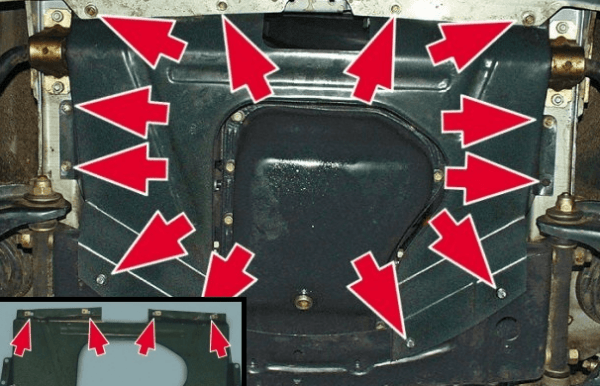 To access the drain hole of the cylinder block, you will need to remove the crankcase protection cover
To access the drain hole of the cylinder block, you will need to remove the crankcase protection cover - In the passenger compartment, the warm air supply lever moves all the way to the right.

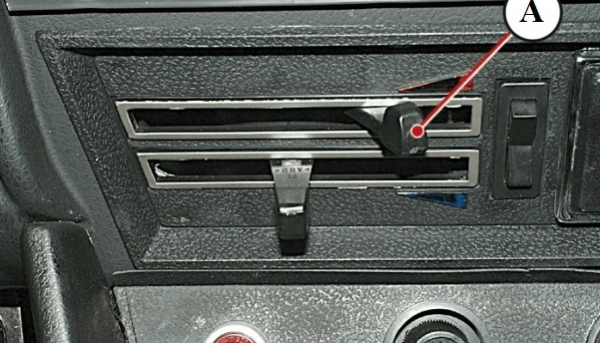 The warm air supply lever must be moved to the extreme right position
The warm air supply lever must be moved to the extreme right position - Unscrew and remove the plug of the expansion tank.

 The plug of the expansion tank is unscrewed and removed
The plug of the expansion tank is unscrewed and removed - Unscrew and remove the radiator cap.

 The radiator cap must be unscrewed and removed
The radiator cap must be unscrewed and removed - With a key of 13, the drain plug of the cylinder block is unscrewed. The liquid is drained into a container prepared in advance.

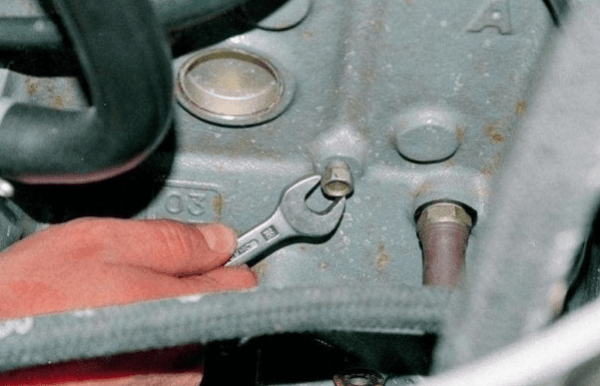 The drain plug of the cylinder block is unscrewed with a key of 13
The drain plug of the cylinder block is unscrewed with a key of 13 - The 30 wrench unscrews the fan sensor nut. If there is none, then the radiator drain plug is removed, after which the remaining coolant is drained.

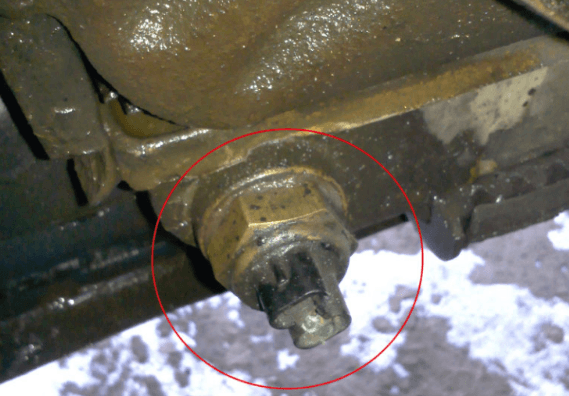 The fan sensor nut is unscrewed with a 30 wrench
The fan sensor nut is unscrewed with a 30 wrench
In order for the system to be completely cleared of the waste fluid, you should unfasten the expansion tank and lift it: this will remove all remnants of antifreeze. After that, the drain plugs (as well as the fan sensor nut) are returned to their place and new coolant is poured into the radiator and expansion tank. Then the air plugs are removed and the radiator and expansion tank caps are screwed on.
First you need to drain the old antifreeze.
Actually, there, on the radiator, there is a special tap, but I decided not to even try to unscrew it, and immediately removed the lower tube. Flowed. The instructions said that it was not necessary to replace the antifreeze, you can pour the old one back. Before draining, I jacked up the car a little and prudently put a basin under the tube. Black antifreeze poured out, like slurry oil, and I came to the conclusion that I didn’t really want to pour it back into the system. Again, I did not drain the engine due to the unwillingness to mess with the stuck nut.
Removed the old radiator, surprisingly, without problems. Those guys who have dealt with the repair of older cars know that it is rarely possible to remove something on them just like that, without a “grip” and other twists and turns.
Tried a new radiator. Everything would be fine, but here's the trouble — the lower tube does not reach. There was a pyatёroshny radiator, and I bought a semёroshny. I had to go to the store for antifreeze and down tube.
The principle of operation of the radiator cap
The design of the radiator cap provides for the presence of:
- intake and exhaust valves;
- springs;
- valve gaskets.
Through the inlet and outlet valves of the plug, the radiator is connected to the expansion tank.
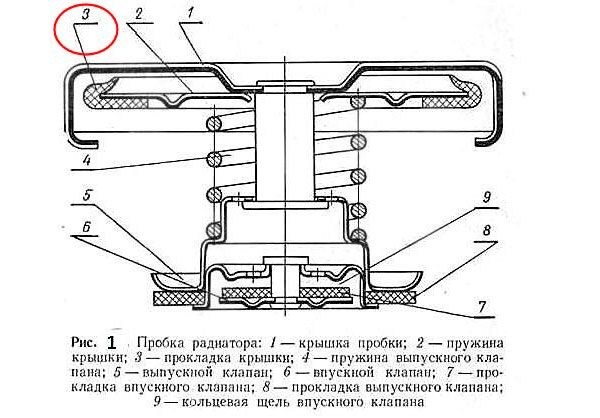

Between the inlet valve and its gasket there is a gap of 0,5-1,1 mm, through which the inlet and outlet of the coolant (coolant) occurs when the engine is heated or cooled. If the liquid in the system boils, the inlet valve does not have time to pass the coolant into the expansion tank and closes. When the pressure in the system approaches 50 kPa, the exhaust valve opens and the coolant is sent to the expansion tank, which is closed by a plug, also equipped with a rubber valve that opens at close to atmospheric pressure.
Video: checking the health of the radiator cap


Watch this video on YouTube
The radiator is part of the cooling system, in which heat exchange processes take place, due to which the engine temperature is maintained at the set mode. Overheating of the motor can cause it to fail, resulting in a complex and costly repair or replacement of the power unit. Long and trouble-free operation of the radiator can be ensured by following the manufacturer's instructions and timely maintenance of this key element of the cooling system. The maximum efficiency of the radiator is achieved due to the serviceability of the cooling fan, fan sensor, radiator cap, as well as by monitoring the condition of the coolant.


